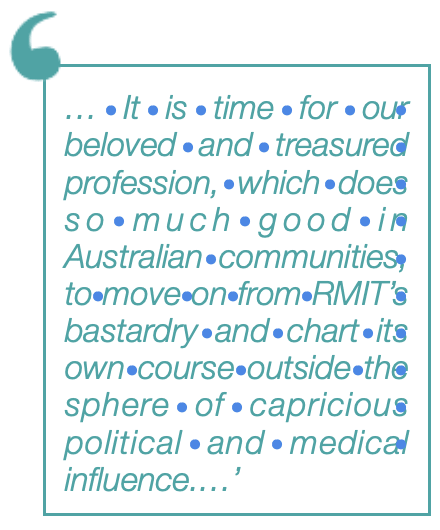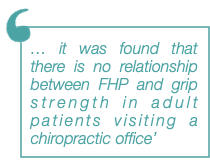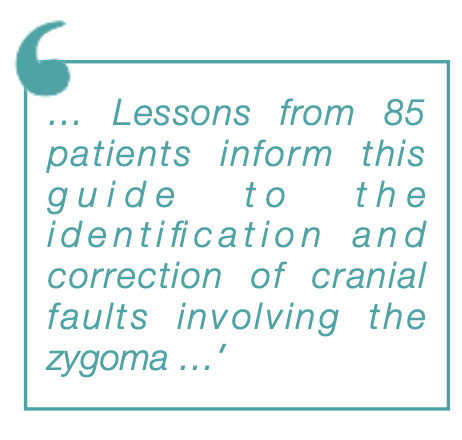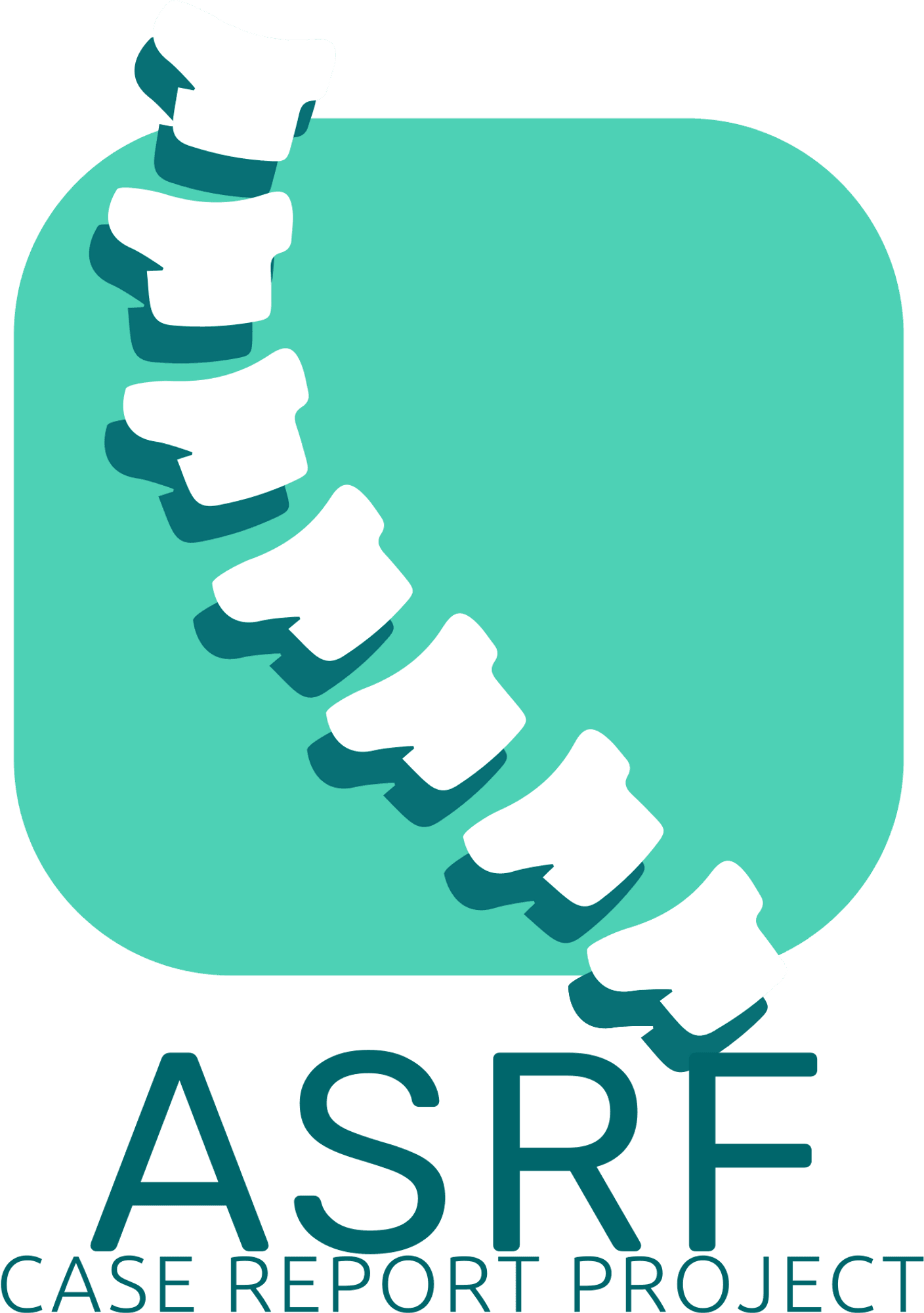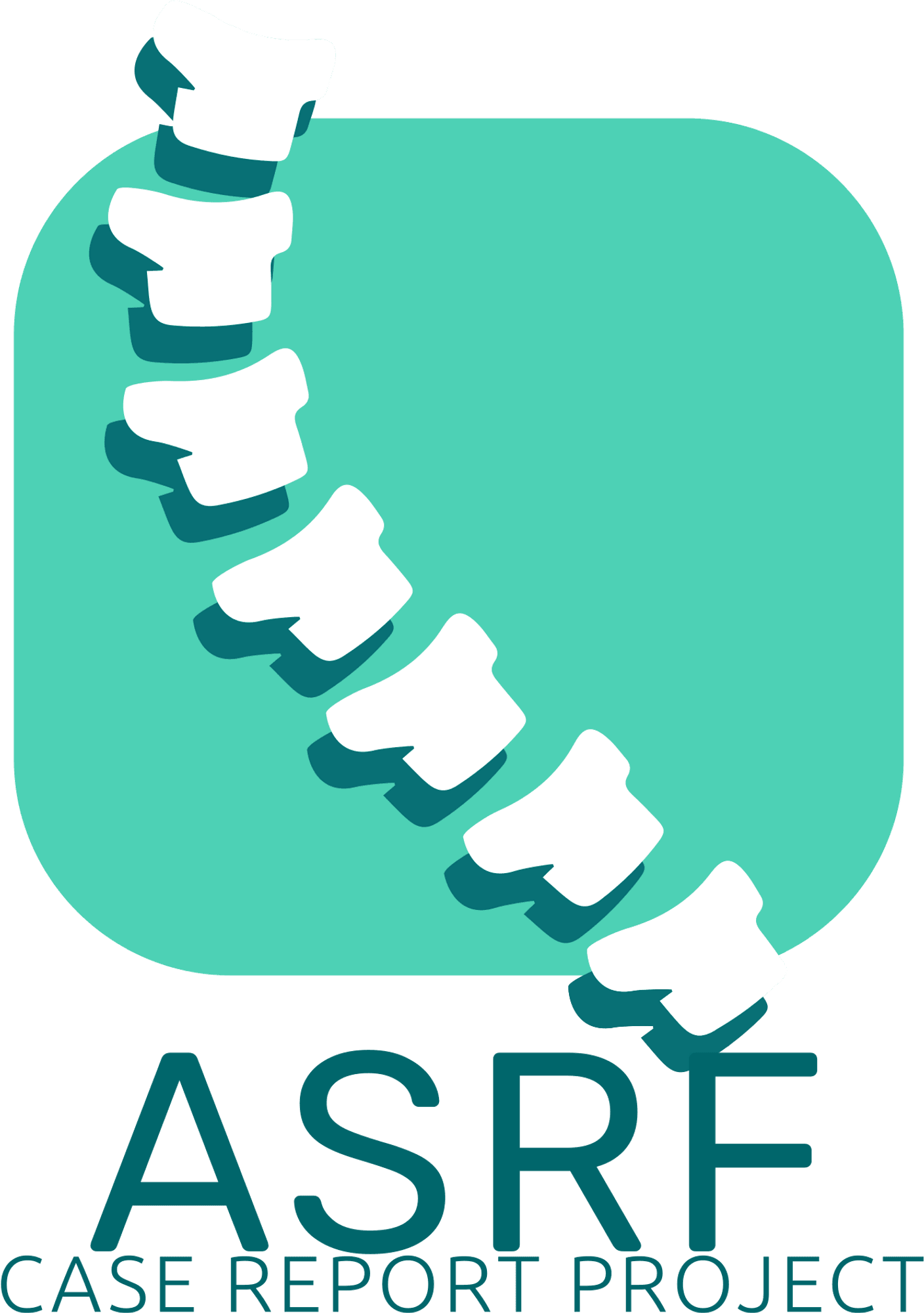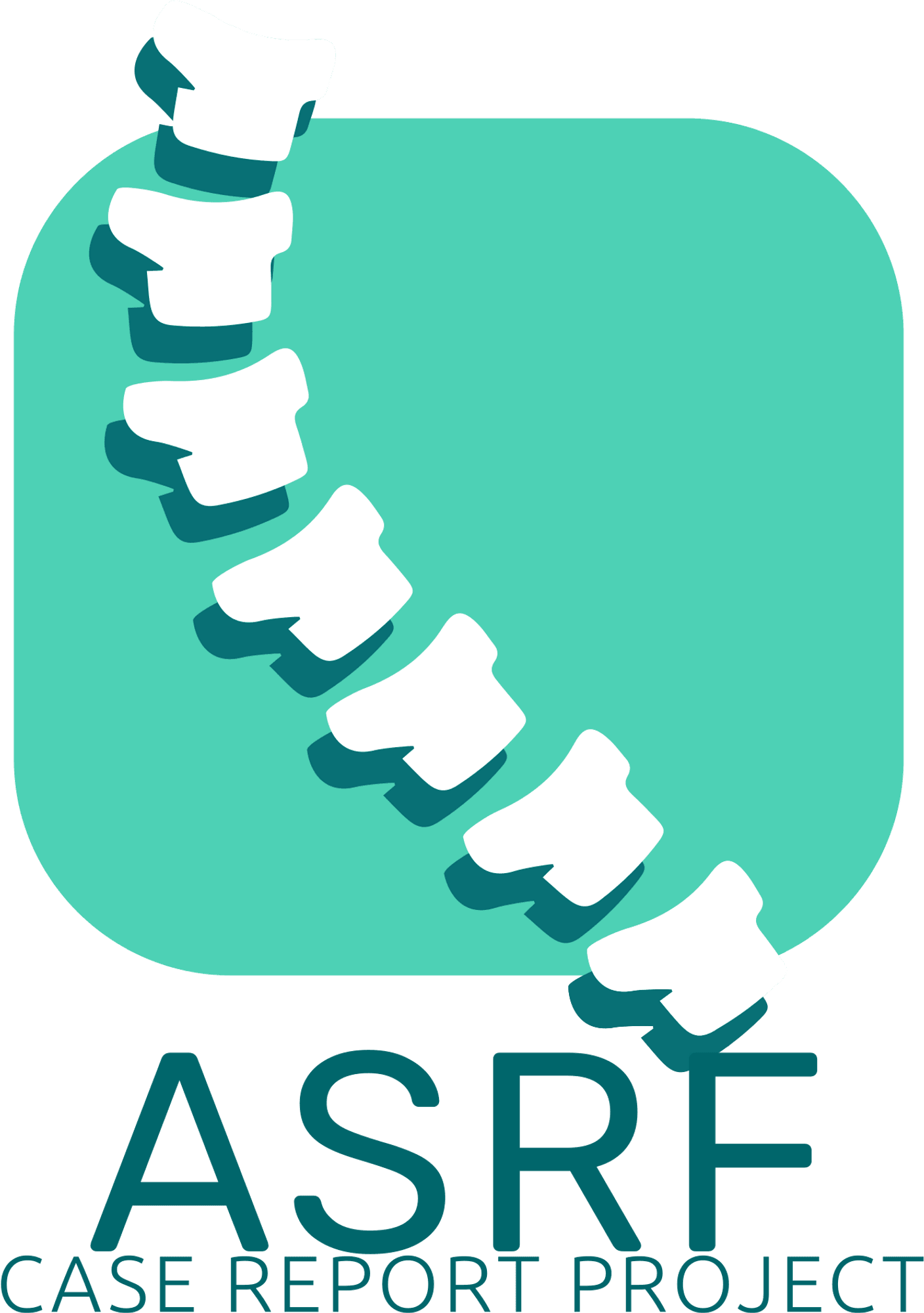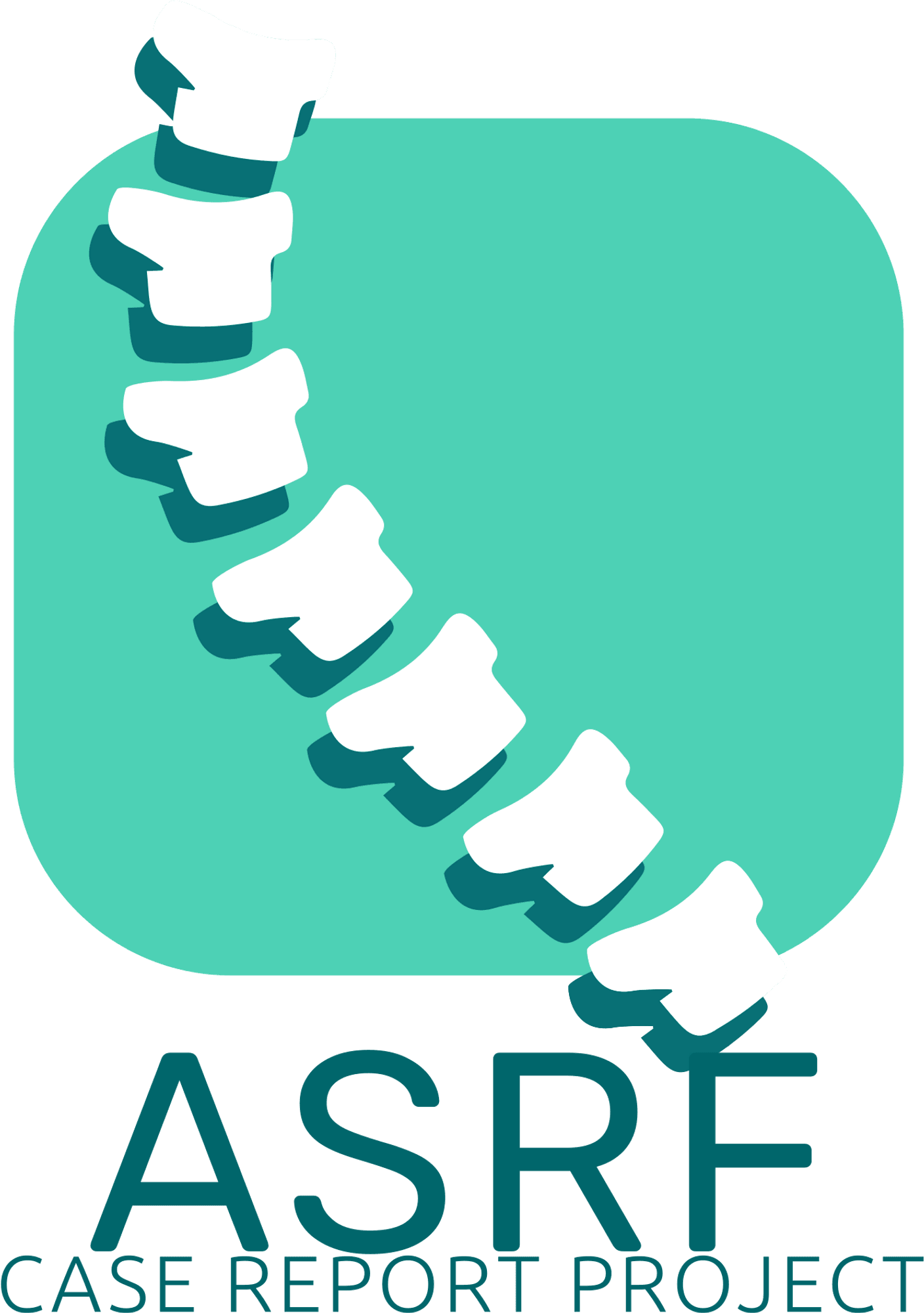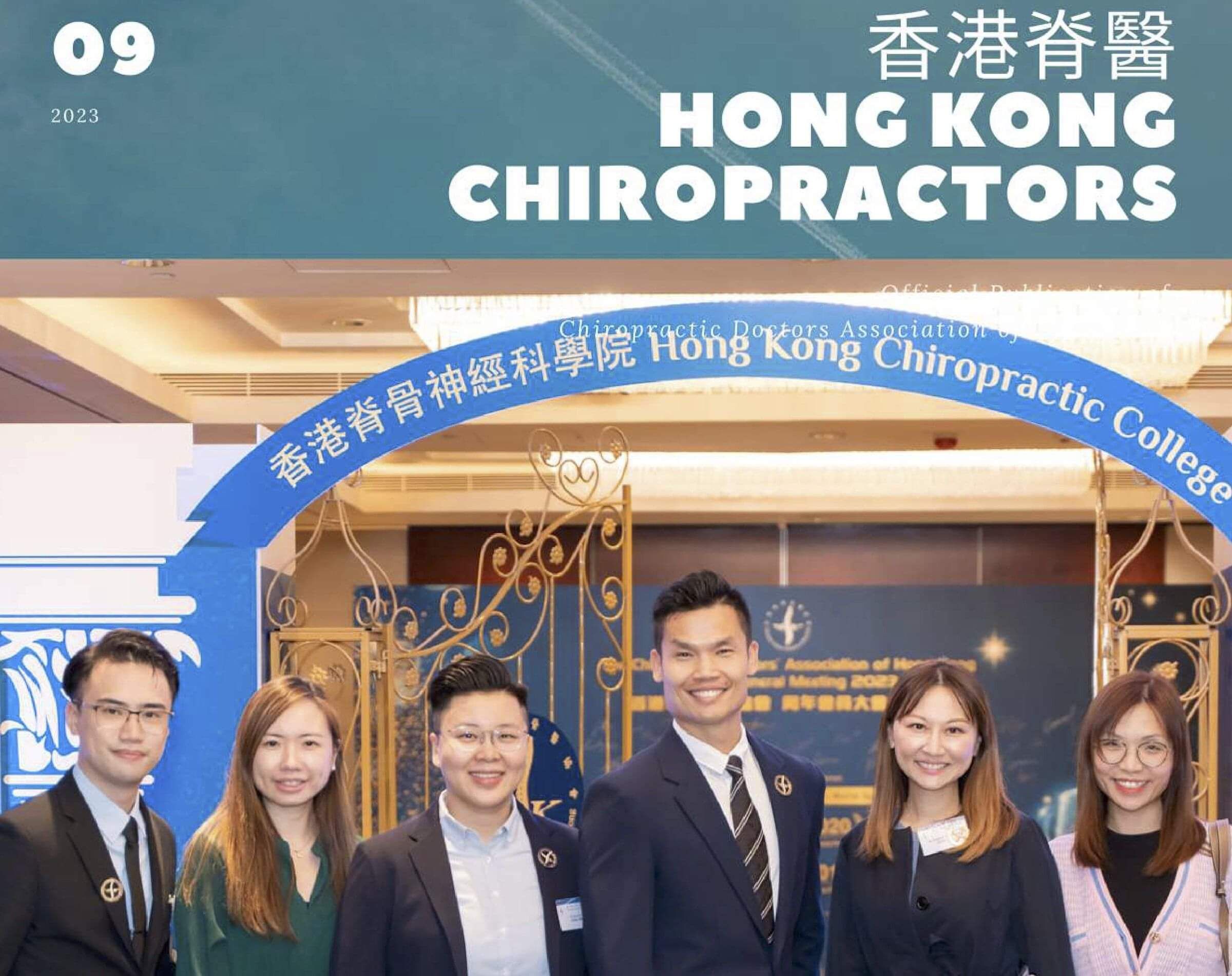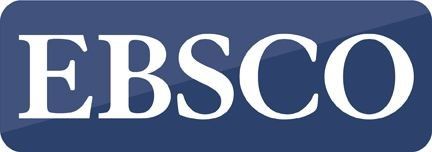
Fourth Quarter 2023
(October - December)
Volume 4, Issue 2 (4.2)
Our wisdom in your pocket
Original research
Case Reports
ASRF Case Reports
Aguilar et al. Improvement in aggression, hyperactivity and social skills in a 4-year-old male with Autism Spectrum Disorder
Johnson et al: Increased interpersonal connectedness and decreased agitation in a 6y male with Autism and Attention-Deficit-Hyperactive Disorder
Steinberg et al: Improved mental clarity, balance, and digestive function, and normalised gait in 63-year-old female under chiropractic care
Treahy-Geofreda et al: Pain and ideation of self-harm in a 49y female addressed with chiropractic care leading to decreased pain and improved QoL
Scholarship
Masarsky: Alternate uses for the Tuning Fork: Doctor, test thyself [The wide-angle lens]
Blum & Blum: Channeling Healing Energy: Informed Consent is an ongoing process in Chiropractic encounters, Part Five
Del Torto: Endonasal ‘balloon assisted’ cranial adjusting
Blum: Nonmusculoskeletal and wellness care in chiropractic: The self referring patient
Rome & Waterhouse: The Vertebral Subluxation premise: Principle 1 continued: The medical literature regarding nomenclature and onset
Rome & Waterhouse: The Vertebral Subluxation premise: Principle 2, the somatic vertebrogenic element
Rome & Waterhouse: The Vertebral Subluxation premise: Principle 3, altered physiological functions
Rome & Waterhouse: The Vertebral Subluxation premise: Principle 4, Segmental and neural disturbance is associated with clinical signs and symptoms, and a range of conditions
Rome & Waterhouse: The Vertebral Subluxation premise: Principle 5, the intent is to correct dysfunction and restore normal function
Applied Kinesiology 73rd collection
ICAK - USA: Applied Kinesiology Status Statement
Lebowitz: An evolution and progression of using Applied Kinesiology for accessing negative reactions to foods
Mincey: Applied Kinesiology and the Factors and Biomechanics of Androgenic Alopecia: A Corrigible Look
Kantarevic: Applied Kinesiology management of Dysmenorrhea: Chiropractic case report
Stark: Ergogenic and Specialty Nutrients and Technical Protocols for Athletes
Miller: Keys To the AK Castle: Building A Foundation
Hogg: New methods of reducing spinal fixation recurrence.
Stark: Shoulder dysfunction patterns
Stark: Sural Nerve Neuritis in athletes
Sprieser: The watch effect
History and Philosophy
Editorials
Ebrall P. Another one bites the dust: Are we witnessing the demise of our profession?
Editorial - Blum: What does the ivory-billed woodpecker debate have to do with chiropractic?
Scalabrini: The pressures of starting to practise as a newly graduated chiropractor [WCCS]
Ebrall P: ‘It’s not the battles we lose that bother me, it’s the ones we don’t suit up for'.
Another one bites the dust: Are we witnessing the demise of our profession?
Narrative: In October 2023 the former Anglo-European College of Chiropractic, at that time a degree-granting ‘University College’, announced it’s merger with another University College, formerly the ‘British School of Osteopathy’.
The matter was meant to be a low-key, under-the-radar event and the announcement was widely distributed several days before 9 October under embargo to that date and time.
However the embargo became a smoke-screen meant to control the narrative by being unilaterally broken earlier by the Osteopaths as they embedded the plan on their web site. McCoy Press ran with the story on Saturday Melbourne (Australia) time and this Journal followed suit on Sunday 8th October Melbourne time.
Events of this significance can not be kept from the global profession in the name of comfortable spin and we present, with references, what is known at this time.
This Journal also attempts to provide a context for what can only be described as a blatant sell-out of the principles of Chiropractic as it was founded in 1895. We implore the resultant entity to now completely remove any reference to Chiropractic in the programs it delivers as they move forward in this unholy alliance.
The former Anglo-European College is not and now can never be a ‘Chiropractic College’; it joins the Welsh Institute as a provider of small-c chiropractic education, yet will no doubt continue with the accreditation of the GCC which is lacking any intellectual capacity to discern the substance which warrants accreditation as a ‘Chiropractic College’. In turn, this renders the GCC as a fault-line which must be addressed by the profession in the name of survival.
Indexing terms: Chiropractic; accreditation; Anglo-European University College; AECC; education; Professional Identity; Future planning.
Cite: Ebrall P. Another one bites the dust: Are we witnessing the demise of our profession?.= [Editorial]. Asia-Pac Chiropr J. 2023;4.2. URL apcj.net/Papers-issue-4-2/#EbrallOctoberDemise
What does the ivory-billed woodpecker debate have to do with chiropractic?
Narrative: What struck me powerfully about the ivory-billed woodpecker debate is how it seems to mimic the relationship between chiropractors treating patients and chiropractic academics/researchers.
I see the chiropractors treating patients as the life-long bird watchers who are experts on bird identification seeing the types of patients that seek chiropractic care, what types of interventions appear effective, and are enmeshed in the nuanced nature of practicing the art of chiropractic.
Whereas the chiropractic academics/researchers are more similar to ornithologists who are experts in different specific fields of study yet should ideally yield and cooperate with the vast majority of chiropractic clinicians to help develop a future for the field of chiropractic.
Indexing terms: Chiropractic; Woodpecker; Realists; Post-realists; absurdists
Cite: Blum CL. What does the ivory-billed woodpecker debate have to do with chiropractic? URL Asia-Pac Chiropr J. 2023;4.2. apcj.net/Papers-Issue-4-2/#BlumWoodpecker
The pressures of starting to practise as a newly graduated chiropractor
Narrative: Commencing practice as a new graduate is quite stressful. Here I share my thoughts and provide some suggestions on how to each the transitions to being the Doctor of Chiropractor you trained to become.
Indexing terms: Chiropractic; World Congress of Chiropractic Students, WCCS; Leadership; new graduate.
Cite: Scalabrini E. The pressures of starting to practise as a newly graduated chiropractor. Asia-Pac Chiropr J. 2023;4.2 URL apcj.net/papers-issue-4-2/#ScalabriniNewGrad
'It’s not the battles we lose that bother me, it’s the ones we don’t suit up for'
Narrative: In August 2023 RMIT University (Melbourne, Australia) announced it would cease delivering a program of chiropractic education. The program commenced in 1975 and was the first in the world to be funded by a National government. Today it is officially being ‘taught out’ and will cease to be in just 4 years.
As irresponsible as this decision may seem from a Chiropractor’s perspective, it remains RMIT’s right to determine which programs it delivers and those which it does not. The lesson the profession must learn is that state-funded universities can not be expected to reflect the passion that their education creates in its graduates, especially Chiropractors.
In past papers I have made this comment and now formalise and index it: ‘Australia’s publicly-funded institutions of higher education have no redeeming qualities to warrant them holding custody of a program of Chiropractic education’; they most certainly do not and can not replicate the integrity of a purpose-focussed private college nor match the integrity and academic commitment evident in many non-Australian universities throughout East Asia which are guided by a strong social conscience.
The usual claim is that a university with multiple disciplines provides cross-fertilisation of ideas and high levels of teaching quality from discipline experts in other fields, but in Australia this can not really be claimed to have been found true. There is also a claim that within a university Chiropractic academics will hone their scholarship, write, and publish; we know this is laughable.
RMIT has been far from exceptional for Chiropractic education for most of its 30 or so years as a university created by one political party’s agenda. It is healthy for the profession to now be forced into examining new models of education to better serve the profession and create a stronger professional identity.
Indexing terms: Chiropractic; accreditation; RMIT; education; Professional Identity; Future planning.
Cite: Ebrall P. ‘It’s not the battles we lose that bother me, it’s the ones we don’t suit up for’. [Editorial]. Asia-Pac Chiropr J. 2023;4.2. URL apcj.net/Papers-issue-4-2/#EbrallOctober23
Correlación entre la postura de la cabeza adelantada y la fuerza de agarre de la mano en pacientes adultos visitando una oficina quiropráctica
Resumen: La postura de la cabeza adelantada también conocida en el idioma Ingles como “forward head posture” (FHP) es una de las desalineaciones clínicas posturales más comunes, se define como una posición del cuello en la que el trago de la oreja se ubica hacia adelante de la mitad de la articulación del hombro. Cabe destacar que esta condición tiene una alta prevalencia en las oficinas quiroprácticas, y se ha vinculado con diversos padecimientos de salud, el FHP no solo afecta la estructura de la columna, además altera el funcionamiento del sistema nervioso lo que puede afectar la fuerza de agarre.
El propósito de este estudio es investigar si existe una relación entre el FHP y la fuerza de agarre en pacientes adultos que visitaron una oficina quiropráctica. De manera secundaria también se investigará la relación entre FHP y peso, edad, estatura e indice de masa corporal (IMC). Los resultados de este estudio revelaron que no existe una relación entre el FHP y la fuerza de agarre en pacientes adultos visitando una oficina quiropráctica.
Los resultados secundarios revelaron una relación moderada y negativa entre el FHP y la edad, lo que significa que a medida que la edad aumenta, la fuerza de agarre de la mano disminuye. También se encontró una relación pequeña y negativa entre el FHP y el IMC, lo que significa que a medida que el IMC aumenta, la fuerza de agarre de la mano disminuye. Finalmente, una relación pequeña y negativa entre el FHP y el peso fue encontrada, lo que significa que a medida que el peso aumenta, la fuerza de agarre de la mano disminuye. Ninguna relación fue encontrada entre el FHP y la estatura. Más investigaciones como estas son necesarias utilizando mejores controles y hechas de manera prospectiva. Estos resultados son importantes para quiroprácticos y otros profesionales en las ciencias de la rehabilitación ya que ayuda en la toma de desiciones clínicas.
Palabras Claves: Postura de la cabeza adelantada; fuerza de agarre de la mano; columna cervical; subluxación vertebral.
Cite: Ventura FL, Osuna A. Correlación entre la postura de la cabeza adelantada y la fuerza de agarre de la mano en pacientes adultos visitando una oficina quiropráctica. Asia-Pac Chiropr J. 2023;4.2. URL www.apcj.net/papers-issue-4-2/#VenturaHeadPosture
Alternate uses for the Tuning Fork: Doctor, test thyself [Wide Angle Lens]
Narrative abstract: All Chiropractors will be familiar with the tuning fork and its usual purpose to assist making determinations about a patient’s hearing abilities. Some may also be aware of its claimed use for identifying fractures in a long bone.
Here I describe three applications of the tuning fork vibrations to aid in narrowing my diagnostic approach in subtle presentations, being shoulder pain, temporal bulge cranial fault, and vertigo with a subjective sensation of ‘floating’.
In each case an adapted use of the tuning fork proved a useful diagnostic aid.
Indexing terms: Chiropractic; self reflection; tuning fork.
Cite: Masarsky CS. Alternate uses for the Tuning Fork: Doctor, test thyself [The wide-angle lens]. Asia-Pac Chiropr J. 2023;4.1. URL apcj.net/papers-issue-4-1/#MasarskyTuningFork
Sacro Occipital Technique: Palpating Occipital Fibers on Animals. A Pilot Study
Introduction: Sacro occipital technique (SOT) uses occipital fibre analysis and treatment (OFT) to find regions of the body that have interrelationships through direct musculoskeletal and/or indirect reflex to the occipital region, spinal segments, and possibly to visceral referred pain pathways used with chiropractic manipulative reflex technique (CMRT). The purpose of this pilot study was to determine if experienced SOT doctors could palpate occipital fibres on canines and if it could be determined that certain fibres were more prominent on one side or the other.
Methods and Intervention: Three canines occipital fibres were palpated by 11 experienced SOT doctors that had no knowledge of each dog. The doctor would palpate subject one, two, and three without anyone else in the room, except for the canine’s owner and the doctor gathering answers to survey questions.
Results: All doctors in this study reported that they could palpate occipital fibres on the three canines, however the number of fibres palpated was inconsistent, with the number 7 being the most common finding (6 of 11 doctors).
Conclusion: This study is the first attempt to demonstrate palpable occipital fibres on a canine. Future study is needed to better address the questions asked as well as determine how to gain clearer data. Since there have been no other studies to date published on the palpation of OFT in animals, this pilot study is an important first step.
Indexing Terms: Sacro Occipital Technique, SOT; Chiropractic; Occipital fibres; palpation; reliability; validity.
Cite: Thompson JE, Bockhold H, Blum CL. Sacro Occipital Technique: Palpating occipital fibres on animals. A pilot study. Asia-Pac Chiropr J. 2023;4.2. URL apcj.net/Papers-Issue-4-2/#ThompsonSOTAnimals
A primary cranial analysis and adjustment method for all three Sacro Occipital Technique (SOT) Categories: A retrospective study of 85 patients
Introduction: The intention of this paper is to present a cranial bone adjustment method that can be primarily used for all three Sacro Occipital Technique (SOT) categories, and to share a three-part cranial indicator analysis that specifies the needed side for the adjustment.
To help build a substantive rational for this intervention a retrospective analysis of 85 patients was undertaken. Also shared is a five-part cranial adjusting procedure that can be used for all three SOT categories
Methods: A retrospective review of the records of 85 patients was performed to assess the three-part cranial indicator analysis to help determine the optimal side for the cranial adjusting of the zygoma.
Results: A consistency was found between analysis of craniofacial range of motion (ROM) testing and head tilt. These results helped guide the side and location to focus the craniofacial adjustments.
Conclusion: This retrospective study of 85 patients yielded interesting correlative findings for the indicators of lateral head tilt, zygomatic ROM, and facial analysis to determine optimal side of zygomatic adjustment.
Indexing Terms: Sacro Occipital Technique, SOT; Chiropractic; Cranial Facial Growth and Development; Lateral Head Tilt; Working Level; Cranial Manipulation.
Cite: Getzoff H. A primary cranial analysis and adjustment method for all three Sacro Occipital Technique (SOT) Categories: A retrospective study of 85 patients. Asia-Pac Chiropr J. 2023;4.2. URL apcj.net/Papers-Issue-4-2/#GetzoffCranial
Channeling Healing Energy: Informed Consent is an ongoing process in Chiropractic encounters, Part Five
Narrative: Due to rules, regulations, and legal ramifications informed consent is something that has entered into the healthcare arena to stay.
This article seeks to discuss how the doctor view informed consent as an ongoing process, before rendering care, during treatments, and following the office visit.
With informed consent being an ongoing process it allows the doctor to continually check in with the patient and allow the patient to change their mind from day to day and moment to moment. By giving the patient the ability to be fluid and an active participant in the clinical encounter it allows their mind and body to feel safe so they can relax and have an optimal response to care.
Indexing terms: Chiropractic; informed consent.
Cite: Blum JD, Blum CL. Channeling Healing Energy: Informed Consent is an ongoing process in Chiropractic encounters, Part Five. Asia-Pac Chiropr J. 2023;4.2 URL apcj.net/Papers-Issue-4-2/#BlumHealingEnergy5
Endonasal ‘balloon assisted’ cranial adjusting
Narrative: Balloon adjusting within the cranium has a number of variants and is well established. Here I present my refinement of the method and give the basic mechanism and reasons for positive clinical results.
The purpose of this clinical technique is to normal cranial motion, taking the torque off the Dura, facilitating normal CSF flow, increasing oxygen carrying capacity to the brain, increasing vascular flow to the brain, increasing venous & lymphatic drainage from brain, and relieving the tension off the anterior attachment of the Dura at the Sellae Turcica.
Indexing terms: Chiropractic; Cranial; Endo-nasal
Cite: Del Torto A. Endonasal ‘balloon assisted’ cranial adjusting. Asia-Pac Chiropr J. 2023;4.2. apcj.net/Papers-Issue-4-2/#DelTortoEndonasal
A comparative analysis of Applied
Kinesiology Upper Cervical Vertebral
Challenge Technique and Upper
Cervical radiographic examination
Introduction: Upper cervical (UC) chiropractic has a more than 70-year history of pursuing empirical research, making many consider UC examination as the ‘gold standard’ for evaluating the UC spine. Applied Kinesiology utilises Vertebral Challenge Technique (VCT) as one tool to determine the presence and direction vertebral subluxation.
Objectives: The purpose of this research is to present a preliminary assessment of the accuracy of the AK VCT when applied to the UC spine by comparing it to established UC protocols, which provide an excellent reference for comparison.
Methods: Patients selected for this study underwent a normal initial evaluation, consisting of history, history based exam, manual muscle testing exam, and UC examination. Additionally, VCT was applied to the CCJ and results for atlas laterality and rotation were recorded. Pre-adjustment VCT results were compared to UC radiographic measurements to determine agreement between these two evaluation procedures and determine the accuracy of VCT when applied to the CCJ.
Results: Twenty-seven patients were included in this study. Multifactorial analysis showed that when compared to UC radiographic pre-adjustment measurements, pre-adjustment VCT showed an agreement range of 3.7%-47.6%. Post-adjustment agreement increased to 96.3%
Conclusion: The lack of agreement with pre-adjustment radiographic, orthogonal model measurements of the CCJ suggests that pre-adjustment VCT applied to the atlas may not be an effective method for determining the direction of correction to reduce CCJ misalignment. However, due to the dramatic increase in agreement post-adjustment, more investigation is warranted.
Indexing Terms: Chiropractic; Upper Cervical; Atlas Orthogonal; Applied Kinesiology; Subluxation; Manual Muscle Test, MMT; Vertebral Challenge Technique; Craniocervical Junction; NUCCA.
Cite: Parry Z. A comparative analysis of Applied Kinesiology Upper Cervical Vertebral Challenge Technique and Upper Cervical radiographic examination. Asia-Pac Chiropr J. 2023;4.2. URL apcj.net/Papers-Issue-4-2/#ParryAKUpperCervical
Non-musculoskeletal and wellness care in chiropractic: The self referring patient
Narrative: The decisions of two patients each who nominated their own schedule of care to minimise recurrence of a chronic non-musculoskeletal condition raises questions about how the experiences of patient-facing Chiropractors may better be conveyed to the discipline’s researchers and academics.
The matter deserves thought to ascertain the best way to study this phenomenon, using a method which controls for confounders such as placebo or ideomotor effect, regression to the mean, coincidental or casual patient interpretation to treatment response and many others.
Patients with self reported positive unexpected non-musculoskeletal outcomes to Chiropractic care or those patients who are self referring themselves for Chiropractic care for wellness or non-musculoskeletal care, deserve to be considered with a view to determining whether we can develop a prediction instrument for this subset of non-musculoskeletal patients who beneficially respond to chiropractic care.
Indexing terms: Chiropractic; non-musculoskeletal presentations.
Cite: Blum CL. Nonmusculoskeletal and wellness care in chiropractic: The self referring patient. Asia-Pac Chiropr J. 2023;4.2 URL apcj.net/Papers-Issue-4-2/#BlumSelfReferral
The Vertebral Subluxation premise: Principle 1 continued. The medical literature regarding nomenclature and onset
Narrative: This is the second of a 6-paper series which presents a descriptive narrative of the Western medical literature to identify and report evidence for each of the five principles of the Vertebral Subluxation Complex (VSC) premise as established in 1947 by Janse, Houser, and Wells (National College of Chiropractic). This literature is additional to that from the chiropractic perspective which is available in the electronic Index to Chiropractic Literature.
The first part of this paper introduced the series and gave evidence to establish Principle One that ‘a vertebrae may subluxate’. This second paper as Part 2 presents the evidence for Principle One by documenting the evidence for the onset of a Vertebral Subluxation Complex.
This 6-part series describes the incontrovertible acknowledgement and weight of recognition of the effect of physical, biomechanical, and physiological vertebral disturbances collectively contributing to the VSC and demonstrates strong support of the chiropractic nomenclature, neurophysiological and clinical implications of the Vertebral Subluxation Complex as recorded in the medical literature.
Indexing terms: Subluxation; Vertebral Subluxation Complex (VSC); onset; vertebral dysfunction.
Cite: Rome PL. Waterhouse JD. The Vertebral Subluxation premise: Principle 1 continued, The medical literature regarding nomenclature and onset. Asia-Pacific Chiropr J. 2023;4.2. URL apcj.net/papers-issue-4-2/#RWVSCPrinciple1b
The Vertebral Subluxation premise: Principle 2, the somatic vertebrogenic element
Narrative: This is the third of a 6-paper series which presents a descriptive narrative of the Western medical literature to identify and report evidence for each of the five principles of the Vertebral Subluxation Complex (VSC) premise as established in 1947 by Janse, Houser, and Wells (National College of Chiropractic). This literature is additional to that from the chiropractic perspective which is available in the electronic Index to Chiropractic Literature.
The first paper, in two parts, introduced the series and gave evidence for Principle One that ‘a vertebrae may subluxate’. This third paper presents the evidence for Principle Two by documenting the evidence for the factors associated with the somatic vertebrogenic element.
This 6-part series describes the incontrovertible acknowledgement and weight of recognition of the effect of physical, biomechanical, and physiological vertebral disturbances collectively contributing to the VSC and demonstrates strong support of the chiropractic nomenclature, neurophysiological and clinical implications of the Vertebral Subluxation Complex as recorded in the medical literature.
Indexing terms: Subluxation; Vertebral Subluxation Complex (VSC); biomechanics; neurophysiology, connective tissue.
Cite: Rome PL. Waterhouse JD. The Vertebral Subluxation premise: Principle 2, the somatic vertebrogenic element. Asia-Pacific Chiropr J. 2023;4.2. URL apcj.net/papers-issue-4-2/#RWVSCPrinciple2
The Vertebral Subluxation premise: Principle 3, altered physiological functions
Narrative: This is the fourth of a 6-paper series which presents a descriptive narrative of the Western medical literature to identify and report evidence for each of the five principles of the Vertebral Subluxation Complex (VSC) premise as established in 1947 by Janse, Houser, and Wells (National College of Chiropractic). This literature comprises predominately medical referencing and includes Chiropractic papers in the electronic Index to Chiropractic Literature.
This paper presents the evidence for Principle Three by documenting the evidence for the clinical findings of altered physiological function associated with the VSC including effects on skeletal muscle, vascular smooth muscle, sphincters and organs.
This 6-part series describes the incontrovertible acknowledgement and weight of recognition of the effect of physical, biomechanical, and physiological vertebral disturbances collectively contributing to the VSC and demonstrates strong support of the chiropractic nomenclature, neurophysiological and clinical implications of the Vertebral Subluxation Complex as recorded in the medical literature.
Indexing terms: Subluxation; Vertebral Subluxation Complex (VSC); biomechanics; neurophysiology, connective tissue.
Cite: Rome PL. Waterhouse JD. The Vertebral Subluxation premise: Principle 3, altered physiological functions. Asia-Pacific Chiropr J. 2023;4.2. URL apcj.net/papers-issue-4-2/#RWVSCPrinciple3
The Vertebral Subluxation premise: Principle 4, Segmental and neural disturbance is associated with clinical signs and symptoms, and a range of conditions
Narrative: This is the fifth of a 6-paper series which presents a descriptive narrative of the Western medical literature to identify and report evidence for each of the five principles of the Vertebral Subluxation Complex (VSC) premise as established in 1947 by Janse, Houser, and Wells (National College of Chiropractic). This literature includes Chiropractic papers in the medical indices and is additional to that from the chiropractic perspective which is available in the electronic Index to Chiropractic Literature.
This paper presents the evidence for Principle Four by documenting the evidence for the signs, symptoms, and a range of conditions associated with segmental, neural disturbance.
This 6-part series describes the incontrovertible acknowledgement and weight of recognition of the effect of physical, biomechanical, and physiological vertebral disturbances collectively contributing to the VSC and demonstrates strong support of the chiropractic nomenclature, neurophysiological and clinical implications of the Vertebral Subluxation Complex as recorded in the medical literature.
Indexing terms: Subluxation; Vertebral Subluxation Complex (VSC); segmental neural disturbance; neurophysiology.
Cite: Rome PL. Waterhouse JD. The Vertebral Subluxation premise: Principle 4, Segmental and neural disturbance is associated with clinical signs and symptoms, and a range of conditions. Asia-Pacific Chiropr J. 2023;4.2. URL apcj.net/papers-issue-4-2/#RWVSCPrinciple4
The Vertebral Subluxation premise: Principle 5, the intent is to correct dysfunction and restore normal function
Narrative: This is the final paper of a 6-paper series which presents a descriptive narrative of the Western medical literature to identify and report evidence for each of the five principles of the Vertebral Subluxation Complex (VSC) premise as established in 1947 by Janse, Houser, and Wells (National College of Chiropractic). This literature includes medical and Chiropractic papers in the medical indices and is additional to that available in the electronic Index to Chiropractic Literature.
This paper presents the evidence for Principle Five by documenting the evidence that supports a Chiropractor’s manual intervention to correct subluxations is associated with changes to dysfunction and neural pathophysiology. These changes are shown to ameliorate symptoms and restore physiology.
This 6-part series describes the incontrovertible acknowledgement and weight of recognition of the effect of physical, biomechanical, and physiological vertebral disturbances collectively contributing to the VSC and demonstrates strong support of the chiropractic nomenclature, neurophysiological and clinical implications of the Vertebral Subluxation Complex as recorded in the medical literature.
Indexing terms: Subluxation; Vertebral Subluxation Complex (VSC); segmental neural disturbance; neurophysiology; adjustment; correction.
Cite: Rome PL. Waterhouse JD. The Vertebral Subluxation premise: Principle 5, the intent is to correct dysfunction and restore normal function. Asia-Pacific Chiropr J. 2023;4.2. URL apcj.net/papers-issue-4-2/#RWVSCPrinciple5
Chiselled hands: A history of manipulative therapy and Chiropractic care
Narrative: A brief history is given of early manipulation in the form of bone-setting, deriving from Britain, to demonstrate the sophistication of DD Palmer’s methods of spinal manipulation which he named Chiropractic.
Palmer not only introduced the use of the spinous process as a lever for his spinal corrections but identified and reported a range of effects gathered as neuroimmunity and neuroimmunology to form his Chiropractic brand of neurobiology. It is shown that Palmer’s ideas mirrored those of Cannon, credited with the discovery of the stress response around 1915 and heralded as the father of psychosomatic medicine, and of Koch, one of the founders of bacteriology.
The distinction of Chiropractic from Osteopathy is given, along with a discussion on the opprobrium of medicine as represented by the American Medical Association, described as the 4th arm of American government with its plan to ‘contain and eliminate’ Chiropractic.
Indexing terms: Chiropractic; competition; containment; DD Palmer; Bone-setter.
Cite: Smith JC. Chiselled hands: A history of manipulative therapy and Chiropractic care. Asia-Pac Chiropr J. 2023;4.2 URL apcj.net/Papers-Issue-4-2/#SmithChiselledHands.
Absolving Chiropractic’s indeterminacy through interdependence
Context: The chiropractic clinical encounter is a vague event in terms given by Swinburne and is difficult to define. This vagueness or indeterminacy is drawn from the variability of the Chiropractor and their training, the variability of the clinical entity within and about the spine that they seek to treat, and the unpredictable variability of individual patients. Collectively these create Chiropractic’s indeterminacy.
Discussion: The clinical outcomes from a Chiropractor’s care are remarkable. There are over 3,089 indexed, published Case Reports of Chiropractors telling their unique story of positive clinical outcomes resulting from their clinical management at the intersection of these indeterminacies. I question how this can be in the face of the interaction presenting as a complex problem with multiple indeterminacies.
Using the philosophical approach of a Pragmatist I absolve these indeterminacies by applying the Japanese philosophy of kokoro with ‘affective sensibility and rational thought’ to explain the Conventional, Realist Chiropractor's clinical encounter through interdependency. Here I argue how and why this could be so and that this argument most probably applies also to the interactions of post-realist small-c chiropractors.
Conclusion: I conclude that interdependency is an acceptable explanation for the effectiveness of the Chiropractic healing encounter. This contention places importance on the interdependency of the relationships in the Chiropractic clinical encounter and removes Western ideas of cause and effect. Interdependence allows inclusion of McDowall’s concept of tone and Richards’ understanding of vitalism.
Indexing Terms: Chiropractic; philosophy; education; indeterminacy; interdependence; Bayesian
Cite: Ebrall P. Absolving Chiropractic’s indeterminacy through interdependence. Asia-Pac Chiropr J. 2023;4.2. URL apcj.net/Papers-Issue-4-2/#EbrallAbsolvingindeterminacy
Autism Spectrum Disorder
We bring you three reports of Chiropractors caring for children with ASD, along with four other Case Reports showing Chiropractic's positive effects with a patient's adaptability and Quality of Life.
We are appreciative of and greatly value the ASRF Case Report Project; click link to see how you can contribute.
Also, we have some interesting new information here:
An Autistic Spectrum Disorder (ASD) Level 3 nonverbal 4 year old, with learning difficulties starts conversations in 4 weeks: A case report
Narrative: This case report describes ASD Level 3 nonverbal boy undergoing a novel Melillo Method™ therapy and looking at retained primitive reflexes as a measure of developmental delay. Retained primitive reflexes are the most basic stage of motor development, and knowledge of this motor-language relationship could provide insights into nonverbal autism.
The main symptoms presented were delayed speech, sleeping issues, emotional regulation with behaviour, and sensory issues. Clinical examination revealed many retained primitive reflexes, with many postural reflexes still present as well as a deficiency in core stability, vestibulo-occular systems and cognition.
Intervention included a 12 program including the use of Photobiomodulation (low level laser), Rezzimax therapy (sensory motor input with vibration), Neurosage (digital therapy utilising color, sound and vibration), and coactivation with the use of coloured glasses (light) and essential oils to stimulate the olfactory system. This program is centre-based and aims to integrate sensory input and strengthen motor skills through regular frequency and duration of multimodal approach, as well as home-based exercises to integrate primitive reflexes.
In the 12 week period the subject became able to have meaningful conversations, decreased his aggressive meltdowns, had consistent eye contact and was more coordinated with crossing the midline. These are all skills not previously demonstrated, as stated by his mum and feedback from his other therapists, once they restarted care.
The changes seen in this child over 12 weeks are numerous, and the examination revealed a decrease in the strength with the Retained Primitive Reflexes. Retained Primitive Reflexes are the most basic stage of motor development and knowledge of this motor-language relationship could provide insights into non-verbal Autism.
Indexing Terms: Chiropractic; Subluxation; Autism Spectrum Disorder; Melillo Method™; adaptability; well-being.
Cite: Dharamaraj G. An Autistic Spectrum Disorder (ASD) Level 3 nonverbal 4 year old, with learning difficulties starts conversations in 4 weeks: A case report Asia-Pac Chiropr J. 2023;4.2. URL apcj.net/papers-issue-4-2/#DharamarajASD.
Improvement in aggression, hyperactivity and social skills in a 4-year-old male with Autism Spectrum Disorder: A case report.
Background: A four-year-old patient with Autism Spectrum Disorder was presented for care, with parents citing concerns around aggression, hyperactivity and poor social functioning.
Management: The patient commenced a course of chiropractic care during which manual adjusting and activator methods were deployed (modified to be age appropriate). His care was subluxation-based and not symptom specific.
Outcomes: Concurrent with a reduction in subluxations, the child’s mother reported a reduction in aggression, destructive behaviour and hyperactivity. This case report indicates that further research into the role of Chiropractic in patients with neurodivergent conditions such as ADHD and ASD is warranted.
Indexing Terms: Chiropractic; Subluxation; Autism Spectrum Disorder.
Cite: Aguilar D, Postlethwaite R, McIvor C. Improvement in aggression, hyperactivity and social skills in a 4-year-old male with Autism Spectrum Disorder: A case report. Asia-Pac Chiropr J. 2023;4.2. URL apcj.net/papers-issue-4-2/#AguilarASD
Increased interpersonal connectedness and decreased agitation in a 6y male with Autism and Attention-Deficit-Hyperactive Disorder: A case report
Background: A six-year-old male presented for Chiropractic care with a dual diagnosis of Autism, and Attention Deficit Hyperactive Disorder. The child’s parents reported agitation and low interpersonal connectedness as primary concerns, and the child was non-verbal at the time of his presentation.
Management: The patient was placed on a six-month care plan during which he was checked for subluxations and adjusted according to the MC2 protocol.
Outcomes: At the conclusion of the care plan, parents and teachers reported that he his verbal ability was increasing, his agitation had significantly decreased, and his interpersonal skills were showing marked improvement.
Indexing Terms: Chiropractic; Subluxation; Autism; ADHD
Cite: Johnson K, Postlethwaite R, McIvor C. Increased interpersonal connectedness and decreased agitation in a 6y male with Autism and Attention-Deficit-Hyperactive Disorder: A case report. Asia-Pac Chiropr J. 2023;4.2. URL apcj.net/papers-issue-4-2/#JohnsonAutismADHD
Improved mental clarity, balance, and digestive function, and normalised gait in 63-year-old female under chiropractic care: A case report
Background: A 63-year-old female presented for care with primary concerns of balance issues, brain fog and difficulty walking. Secondary concerns included tendonitis and digestive issues.
Management: The patient commenced a course of subluxation-based chiropractic care during which numerous techniques were used. These included Sacro-occipital technique, Torque Release Technique, Thompson, Diversified, and Toggle Recoil.
Outcomes: At the conclusion of her care plan, the patient reported significant improvements in all symptomatology, concomitant with reductions in subluxation findings and other objective tests. Additionally, mental clarity, mood, and energy were all improved.
Indexing Terms: Chiropractic; Subluxation; Gait; Balance; SOT; Torque Release Technique; Toggle Recoil.
Cite: Steinberg B, Clodgo-Gorden K, Postlethwaite R, McIvor C. Improved mental clarity, balance, and digestive function, and normalised gait in 63-year-old female under chiropractic care: A case report. Asia-Pac Chiropr J. 2023;4.2. URL apcj.net/papers-issue-4-2/#SteinbergAdaptability
Pain and ideation of self-harm in a 49y female addressed with chiropractic care leading to decreased pain and improved QoL: A case report
Background: A 49-year-old female patient presented for care with primary complaints of chronic neuropathic pain, depression, insomnia and suicidal ideation, the latter of which was attributed to her pain length and severity, and the lack of ability to achieve relief with other care modalities.
Management: She commenced a course of chiropractic care for subluxation correction. During the care period, the chiropractor used Diversified (manual), Thompson, and Activator methods. Specific protocols were observed for Cervical Syndrome. Derifield Pelvic Analysis was used, as was a drop table.
Outcomes: At the conclusion of the course of care the patient’s pain had significantly reduced and numerous symptoms had resolved. The patient reported that she had regained the will to live, and no longer suffered from suicidal ideation.
Indexing Terms: Chiropractic; Subluxation; Suicide; Self Harm; Negative ideation
Cite: Treahy-Geofreda T, Lanoue B, Postlethwaite R, McIvor C. Pain and ideation of self-harm in a 49y female addressed with chiropractic care leading to decreased pain and improved QoL: A case report. Asia-Pac Chiropr J. 2023;4.2. URL apcj.net/papers-issue-4-2#LanoueQOL
Improved Heart Rate Variability, mood, reproductive health and gut function, and decreased eczema symptoms in a 30-year-old female under chiropractic care: A case report
Background: A 30-year-old female patient presented for care at a chiropractic clinic with a primary complaint of decreased strength. Further examination revealed more specific symptoms of low back pain, neck pain, stiffness, fatigue, eczema and low energy.
Management: The patient commenced a course of subluxation-based chiropractic care during utilising Torque Release Technique, Toggle Recoil, Thompson, Gonstead and Sacro-Occipital Technique with pelvic/sacral blocks.
Outcomes: At the conclusion of her care plan, the patient reported improved mood, menstrual health, and gut function, reduced eczema and better sleep and energy. This was concomitant with a reduction in subluxation findings, and improvements in objective measurements (Heart rate variability and sEMG).
Indexing Terms: Chiropractic; Subluxation; HRV; eczema; gut function; SOT; Torque Release Technique.
Cite: Steinberg B, Clodgo-Gorden K, Postlethwaite R, McIvor C. Improved Heart Rate Variability, mood, reproductive health and gut function, and decreased eczema symptoms in a 30-year-old female under chiropractic care: A case report. Asia-Pac Chiropr J. 2023;4.2. URL apcj.net/papers-issue-4-2/#SteinbergWell-Being
2009 Annual Report - Chiropractic Doctor's Association of Hong Kong
This edition is particularly noteworthy as it features significant updates and milestones from our chiropractic community here in Hong Kong, especially those involving the Chiropractic Doctors' Association of Hong Kong (CDAHK).
CDAHK has been actively involved in several impactful initiatives that have broadened the scope and recognition of chiropractic care in Hong Kong. One of our most notable achievements, as covered in this edition, is our participation in major government policy forums. This has allowed us not only to voice our perspective but also to ensure that the chiropractic profession is considered in healthcare policy-making.
Moreover, we are proud to announce our involvement in various medical associations and asian medical/dental forum. These engagements have fostered a productive exchange of knowledge and have further bridged the gap between our profession and other healthcare disciplines.
In the academic sphere, we've embarked on collaborations with esteemed institutions to enhance chiropractic education and research. We embrace the young chiropractors and take them to become the next generation leaders. This move not only promises a brighter future for aspiring chiropractors in Hong Kong but also contributes to the scientific body of knowledge in our field.
Tap image above to read, or go here for the PDF version
Disclaimer
This publication is a professional journal by Chiropractors for Chiropractors. Readers not fully trained as a Chiropractor should not act on their own on any information published in these pages and should always discuss their situation with their Chiropractor.
The papers addressing COVID report current information at their time of writing. The topic is fast moving and readers are encouraged to extract threads from what we publish here and undertake their own searches for the most recent information.
